Written by Taylor Templer, West Central Coordinator
On March 11th, Youth Eco Solutions (YES!) held a workshop at Prairie Woods Environmental Learning Center in Spicer called Help Our Waters. New London-Spicer Middle School and Minnewaska YES! students attended the workshop to gain knowledge about aquatic invasive species (AIS) and water quality in Kandiyohi County. The purpose of this workshop was to educate students and prepare them for this summer when they will be kayaking lakes and rivers in Kandiyohi County to survey for aquatic invasive species and do water quality testing with West Central Coordinator, Taylor Templer.
Eric Katzenmeyer, AIS Specialist for the Minnesota Department of Natural Resources (DNR), started the day off by educating the students about aquatic invasive species focusing on: prevention, identification, and management. Students learned the “Clean, Drain, Dry” concept in preventing the spread of AIS. Eric stated that “An AIS has never been completely removed from a lake once established. Prevention is key.” Students learned how to identify common AIS such as Zebra Mussels, Curly-leaf Pondweed, Starry Stonewort, and Eurasian Watermilfoil. Eric explained that the MN DNR currently doesn’t conduct AIS management in lakes but they do regulate management permits that lake associations might want to do such as mechanical removal of plants or application of herbicides. Part of Eric’s job is to review the aquatic plant management permits and evaluate the application by doing a delineation survey and field inspection. This process is intended to reduce the risk of damage to native plants and impact on water quality.
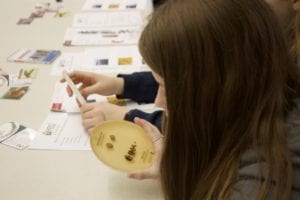
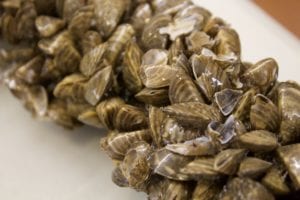
Russ Hilbert, Kandiyohi County AIS Coordinator was invited to educate the students about efforts being made in Kandiyohi County focusing on decontamination, outreach, and local grants. Kandiyohi County has two decontamination units where water is heated to 140 degrees to rinse off water craft to sure there is no AIS present. One unit is located at the Saulsbury Beach Access on Green Lake all summer and the other unit moves to various popular lakes in Kandiyohi County. In Kandiyohi County in 2019, there were 738 violations found by the AIS inspectors; it is illegal to transport any AIS in the State of Minnesota. Russ also talked about the local grants available for lake associations and other organizations to help with education and management of AIS. YES! received $1,000 from the Kandiyohi County AIS Fund to support this workshop and the summer surveying program. A special thank you to Kandiyohi County AIS Task Force members.
Jon Morales, Watershed Program Manager for the Middle Fork Crow River Watershed District was invited to talk about all things water quality. He focused on monitoring, best management practices, and projects the students can do to help water quality. Students learned that monitoring is important to raise awareness, make improvements, and evaluate changes. Jon stated “You can’t manage what you don’t measure.” He also explained that MN has some of the best data in terms of water quality. Students learned the various types of monitoring including: physical monitoring (secchi disk, staff gauge, rain gauge), chemical monitoring (water sample sent to lab), and biological monitoring (survey for macroinvertebrates). Students also learned about the Adopt-a-Drain Program that encourages community members to clean storm drains in order to keep them free from trash, sediment, and leaves.
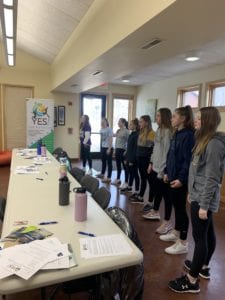
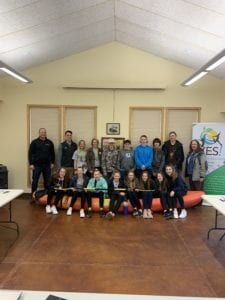
Taylor Templer, West Central YES! Coordinator conducted an AIS transmission lab with the students. Around the room were cups of water labeled with different lakes such as Green or Calhoun. The students each received an ID such as avid angler or cabin owner, a cotton ball to represent their boat, a tweezers, and a cup of water to hold their cotton ball. Students were asked to visit a variety of the lakes by dipping their “boat” into the “lakes” and back into their cup. The students were given a sheet of paper to record the lakes they visited in order. At the end Taylor added iodine to each of the students’ cups; the water either remained the same or turned a dark green color (corn starch present), indicating that it had the AIS. The students had a lot of fun trying to figure out what lake the AIS started in by comparing with each other. This activity taught the importance of prevention and planning while recreating on our lakes to stop the spread of AIS. After a full day of training and education, students are ready to help our waters!
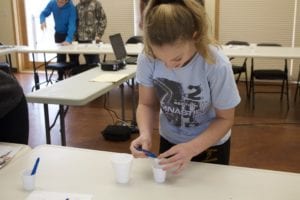
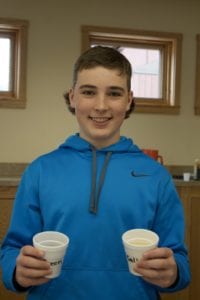
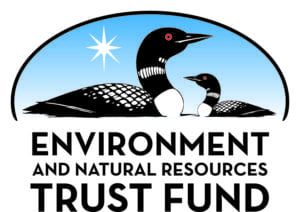
Major funding for the YES! program was provided by the Minnesota Environment and Natural Resources Trust Fund as recommended by the Legislative-Citizen Commission on Minnesota Resources (LCCMR).